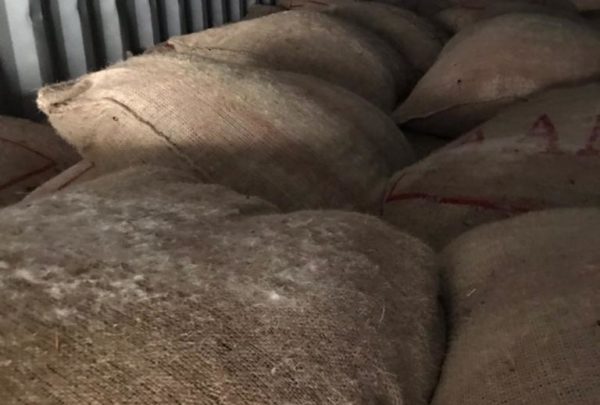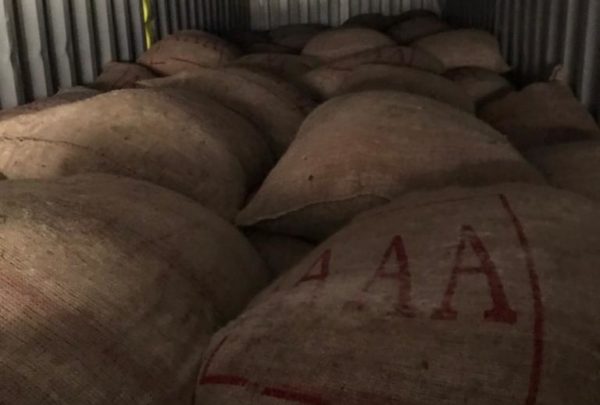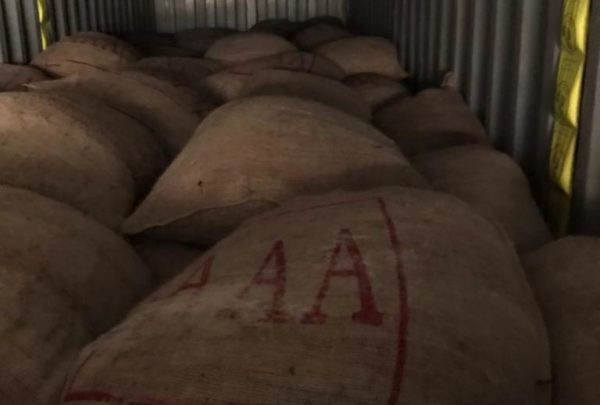Moisture Damage
Sea Containers are an economical and safe way of shipping almost any kind of cargo. But putting a cargo into a closed strong box also entails a constant risk of moisture damage for every kind of cargo on every voyage.
Every year thousands of containerized cargoes suffer moisture damage and condensation damage. Metal parts arrive corroded, cardboard boxes moldy and wet and food commodities are found to be unfit for consumption. Millions of dollars are spent on protective packaging, coatings and silica gels that often do not solve the problem.
The solution is to create a dry environment within the shipping container. Desiccants is based on the proven ability of Calcium Chloride to aggressively remove moisture from the air. The resulting brine is collected in a solid plastic container that is installed in the container corrugation. Desiccants is made only from PE/PP plastics and salt, which are non-toxic and recyclable.
Moisture Damage – A CheckList
Sea Containers is an economical and safe way of shipping almost any kind of cargo. But putting a cargo into a closed strong box also entails a constant risk of moisture damage for every kind of cargo on every voyage.
- Metals corrode, discolor and loose their shine
- Cargo and packaging get moldy, soft, crumbled and discolored.
- Bad smell
- Physical damage from water, ice, things gluing together, caking etc.,
Such damage may result in substantial losses and costs. Yet obviously not every shipment suffers moisture damage, and most of those that do, suffer only limited damage. In fact, lots of moisture damage remains unrecognized, because it is considered “normal”. Very few shippers have a good system of feedback from the receivers of their goods. There may be lots of things they don’t know.
The pattern of moisture damage may seem random. The moisture processes are examples of strongly non-linear physics. That means that very small differences in the cargo and voyage conditions can have a huge effect of the outcome. That is why you may have 4 perfectly safe shipments and the 5th may be a disaster. This means that there is always a risk of moisture damage in the next shipment, even if the last one was ok

The pattern of moisture damage may seem random. The moisture processes are examples of strongly non-linear physics. That means that very small differences in the cargo and voyage conditions can have a huge effect of the outcome. That is why you may have 4 perfectly safe shipments and the 5th may be a disaster. This means that there is always a risk of moisture damage in the next shipment, even if the last one was ok

Moisture Damage can be Prevented
All containers contain moisture from the time of loading and in the cargo. No container is airtight. Moisture will move in and out of the container during the course of the voyage – “Container Breathing”. The objective of a moisture protection program is to prevent the build up of moisture in the air to levels where it may cause damage. This is done by reducing the amount of the moisture entering the container and by using “Absorbers” to remove moisture from the air.
We like to present the Absortech moisture protection program as a kind of checklist of things that should be arranged as well as possible. And it is to be noted that many of the items on the list can be influenced only to a degree. Yet even small changes can result in big improvements. In some cases a few tens of grams of water in the wrong place is enough to cause significant damage.
Storing pallets inside or outside is often enough to make the difference between no damage and “disaster”. Simply adjusting the temperature of the cargo at loading can prevent damage. Thus it is well worth to make what improvements are at all practical, and the balance will then have to be taken up by the packaging and the absorbers.
Is the Container Tight?
A minimum requirement is of course that the container is watertight against rain and spray. That is usually the case, but especially the bottom side and the doors are vulnerable to damage that may not be noticed.
Check the seals. Certainly no container is airtight, but a container in good condition allows air (and moisture) to move in and out of the container only slowly, over hours perhaps. That significantly reduces the amount of moisture moving into the container under common circumstances. (Container Breathing).
Tape the vent holes if you are shipping a dry cargo. For a moist cargo, such as agricultural commodities, it is usually better to leave the vent holes open.
Is the Container Dry?
A container that has been washed before loading, brought in from outside into a warm loading area or stored in a humid place, may contain lots of water. In particular, attention must be paid to the container floor. The humidity of the wood should not be above 18%.
All pallets and other wooden dunnage must be dry. Preferably the moisture content should not above 18% and certainly not above 20%. It is easy to check the humidity with a small handheld device commonly used in the construction industry and costing a couple of hundred euros.
Moisture control In shipping Containers
Whoever has opened a shipping container only to find his valuable cargo rusted, moldy and dripping with water can readily appreciate the dangers of moisture in container transports. Most cases of moisture damage are far less severe peeling labels, spotted surfaces or soggy packaging, but are nonetheless unacceptable. Every year thousands of shipments arrive damaged, causing losses of millions of dollars from lower quality as well as additional costs for handling and administration. And in most cases such damage is not even covered by the insurance.
The root cause of moisture damage in container transport is the simple fact that warm air can hold more moisture than cold air. Take the dewy grass in the morning after a cool summer night as an example. Moisture gets into the air in the container from the outside or by evaporation from the cargo. When the temperature in the container changes or there is a difference in temperature between different parts of the cargo, damaging moisture conditions arise.
Moisture damage happens even where there is no condensation. Many grades of steel will start to corrode at a relative humidity of about 70%. Mould growth could begin after even a short period over 80%. The only remedy is to keep the air inside the container dry. The first thing to do is to ensure that the cargo and all the packaging are as dry as possible. A wet container floor or some pallets stored in the rain may be enough to ruin a cargo.
No container is airtight whatever you do, it will “breathe” as a result of temperature cycles. When the air inside the container cools, the pressure drops. Air and moisture moves in from the outside to equalize the pressure. The opposite happen when the air inside the container heats up, but it is easy to show how a repeating cycle of breathing can cause a buildup of moisture inside he container, especially if there is absorbing packing materials. Using a container with good seals and vents taped shut will slow down, but not stop the “container breathing”.
Packaging and wrapping the goods in plastic foil will not necessarily help. Moisture migrates quite quickly through most types of plastic foil. Even if a moisture proof foil is used, there could still be a problem since the sealed package then in effect becomes a “mini-container” subject to the same processes as the container.
Substances that remove moisture from the air are called “desiccants”. The most widely used desiccants are probably “silica gel”, a kind of porous glassy substance that adsorbs moisture well under the right conditions. When used in containers they are fatally flawed in that they work best at room temperature, and not at all at the much higher temperatures often found in containers.
Other widely used desiccants based on dried clay work to a little higher temperature, but then similarly fail in an even more dramatic way. The worst case is when the desiccant is already fully charged and then meet high temperature, followed by low temperature, e.g as a result of a day and night cycle when the container is on the quayside. Much of the moisture absorbed is then first re-evaporated and then rained out. Sometimes the container will look as someone threw a bucket of water inside the container, and wet moldy desiccant bags are a common sight.







